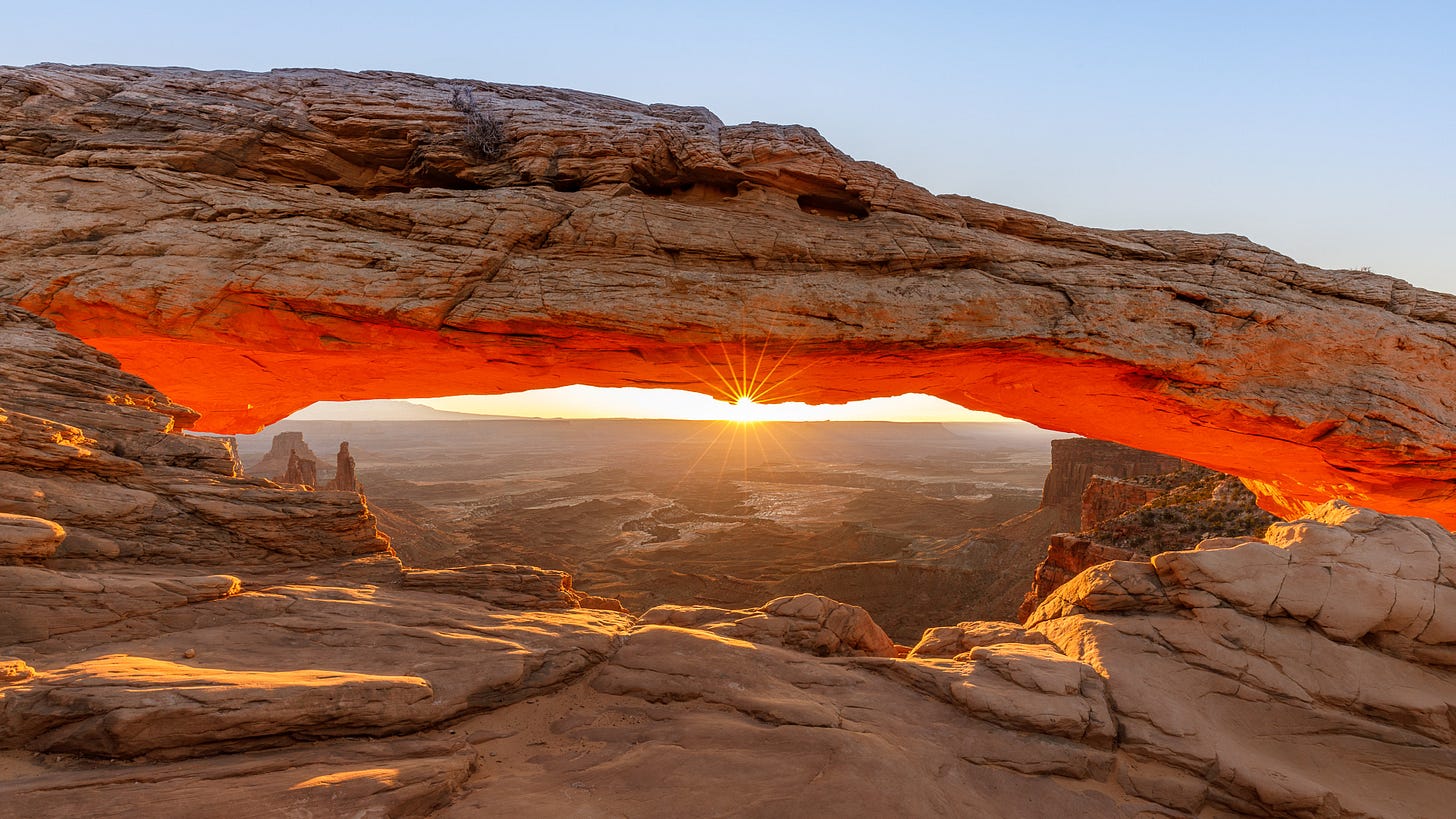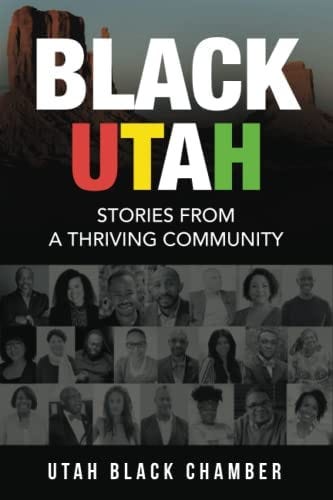An Astonishing Look at Utah’s Black History
“The best snow on Earth with arguably the best mountain lands in the country. Five national parks full of amazing hiking trails, mountain and rock formations, and majestic landscapes. Business reviews and economists rank Utah. The top in the country for business and opportunity. The home base of the LDS (Mormon Church). This is usually how Utah is identified. What is not associated with Utah is diversity, particularly, a home to African-Americans.”
James Jackson III, Founder and CEO of the Utah Black Chamber
As a digital nomad, I love taking trips to various American cities and towns. The opportunity to dive into the sociological and historical underpinning of an area has always excited me.
Back in 2011 during the early years of my work as an independent journalist, I would write about cities and built environments for print and digital publications like Government Technology Magazine. Consistent with my nomadic proclivities, I’d randomly pick an area, travel there, and do an intensive, on-the-ground assessment of the city and regional environment.
To capture market intelligence for the articles I was writing, I would chat with area residents strolling the streets, experiment with the local transportation systems, frequent bars, and restaurants, and meet with downtown partnership and chamber of commerce leaders about their economic and community development opportunities and challenges.
At the time, my blog UrbanEngagementWebcity had also attracted quite a following. One article post from back in 2011 that proved to be quite popular was entitled “Economic Development in Downtown Salt Lake City: Is it Happy Hour Yet.” I found my first trip to Salt Lake to be a generally positive and favorable experience.
I did, however, experience a very subtle racial discomfort while visiting there. Oddly, what I was feeling was reconfirmed during a lunch meeting I had with a representative from a local civic organization who asked me over lunch whether I felt uncomfortable or unusual as an African-American man visiting the area. The awareness around the fact that this issue indeed did exist was all the acknowledgment I needed to feel better about my Salt Lake experience.
There was, however, one overt encounter that did rattle me a bit. Walking out of a restaurant with my wife at the time (who happened to be white) and daughter — a man seated at the table facing our direction while we were leaving stared us down with the most hateful daggers in his eyes. Sadly, my wife who had never witnessed anything of that magnitude was reduced to tears.
Utah’s Storied Racial History
The permanent settlement of Black Americans in Utah dates back to 1847 and religious leader Brigham Young’s advanced party. A man by the name of Green Flake was an early Black member of the Church of Jesus Christ of Latter-Day and one of three Black LDS pioneers who entered the Salt Lake Valley on July 22, 1847.
Born into bondage on a plantation in North Carolina, his enslaver James Flake transported him to Mississippi in the 1840s. There James and his wife along with Green became members of the LDS church in 1944. The Flakes then relocated in 1845 to Nauvoo, Illinois. In the 1850s after having worked with Brigham Young and Heber C. Kimball for a few years, Green Flake received his freedom and married a former slave by the name of Martha Morris who he had two children with.
Over time, they settled into a life of farming and growing fruit in a small community of Utah Black families known as Union. They were active in their community and church and well-liked and respected by neighbors and friends in the area.
By 1850, with Utah having been ratified as a state, there were approximately sixty Black residents in the territory, with most residing in Salt Lake, Davis, and Utah counties. Many were employed in small towns while a few worked for businesses in Salt Lake City.
While slavery was not codified by law in the state until 1852, the Mormon community generally assumed that the servile status of these residents until 1862 when Congress moved to abolish slavery in the U.S. territories
The rapid proliferation of the national railroad, mining industry, and military boosted the Black population in the Utah territory from 118 in 1870 to 677 in 1900. By then the area’s Black community presence had expanded in numbers sufficient to establish churches, newspapers, social and fraternal groups, and political organizations.
According to the book Black Utah, curated by the Utah Black Chamber:
“The growth of the Black railroad employees gave birth to a Black ecosystem in Ogden, Utah. A couple of the most prominent Black businesses were the hotel and the Porter and Waiters Club. The club was a host to many popular jazz musicians during that time, such as Duke Ellington, Count Basie, Nat King Cole, Louis Armstrong, Cab Calloway, and Ray Charles.”
In the years after World War II, Black Utah residents, as was the case in many parts of the nation, began to direct their attention to civil rights and racial injustice issues. A NAACP branch was established in Ogden in 1943 while the Salt Lake branch was being reestablished.
Black progress in the ensuing years are noted by James Jackson III, founder and CEO of the Utah Black Chamber in the book:
“When the Utah Black Chamber was founded in 2009, the Black population was less than one percent. Due to the growth of Utah’s economy, the Black population experienced another surge in growth in 2014, doubling the population again.”
He continues:
“As Utah continually grows, and attracts more professionals from out of state, many Black Americans have been contacting the Black Chamber about the Black experience in Utah. Questions would be asked like: Is it safe? How are the Mormons? Do Black people live there? Where do I go to church? Get a haircut? They are inquiring if there’s a community for them.”
Providing a bit of perspective about the evolution of Utah’s Black population, Jackson offered this:
“When the Utah Black Chamber was founded in 2009, the Black population was less than one percent. Due to the growth of Utah’s economy, the Black population experienced another surge in growth in 2014, doubling the population again….
….As Utah continually grows, and attracts more professionals from out of state, many Black Americans have been contacting the Black Chamber about the Black experience in Utah. Questions would be asked like: Is it safe? How are the Mormons? Do Black people live there? Where do I go to church? Get a haircut? They are inquiring if there’s a community for them.”
Jackson himself grew up in Salt Lake City, raised by a young couple that surrounded him with a positive experience.
Says Jackson:
“They understood and applied the saying 'it takes a village to raise a child.' Even though my parents were young, they worked hard to keep my sister and I in a safe and stable environment. Throughout my childhood, I was shy and introverted. I just stuck to books and out of trouble, and went on to graduate college with degrees in marketing and finance”
From there he spent nearly 20 years in the financial industry, beginning with financial services, then on to mortgage lending, commercial lending, consumer lending, and all encompassing banking.
“From my experience in the industry, I instructed Personal Finance as an adjunct instructor at the local community college and taught financial literacy classes across the community. My passion has always been developing the community. And in 2019, I was named as the new Supplier Diversity Program Manager for Zions Bancorporation, which further allows me to help elevate and provide opportunities for Utah’s minority-owned businesses.”
Jackson says he has been in public speaking since he was 13 years old, when his grandfather began taking around the country to Baptist conventions and representing the youth.
“My first public speaking gig was in front of several hundred old men! However, what I discovered from that was even though I was shy, I enjoyed public speaking and inspiring people. From that point, I took every opportunity I could to give a talk.”
In 2009 he founded the Utah Black Chamber.
“My vision was to not only help in the economic development of my community, but to continue to lift and inspire those around me, and become the premier organization of the African-American and minority communities in connecting, engaging, and educating. The chamber now has a foundation, over 200 members and growing exponentially, two new chapters representing several hundred Black businesses, and is working to expand throughout Utah.”
Asked about what fueled the decision to publish the book, James had this to say:
“Being a Utah native, I was frustrated with several things. First, after high school, many of my good friends left because of the lack of diversity. I stayed because I was offered free tuition to the University of Utah. Then there was the fact that the Black community has been a constant revolving door and as opportunities here have attracted young Black talent, that too has been even a bigger and faster revolving door.”
He says that people always have negative things to say about Utah in general and can’t believe someone like me is a native, is still living here, and not LDS
“Over the last couple of years, some negative media here has made national headlines and it’s been embarrassing.”
With this being said, James says that he is fully committed to changing the narrative.
“I’ve wanted to be a pioneer for change and hope to be an example of how Utah can be for emerging diverse leaders. I want to let people know about Utah for diverse people and how they can really thrive here and hope to create more opportunities for not only a growing diverse presence, but also a diverse presence of leadership.”
In terms of some of the biggest misconceptions that outsiders have about Utah’s Black community, he rattled three off:
“One, there isn’t one, namely a Black community; two, it’s all about the Utah Jazz; and three, we’re all LDS.”
He cites the book as just one avenue for helping to dispel those myths.
“The Utah Black Chamber and other local Black organizations have also worked hard to create a community that best represents who we are. Now we are focused on how we tell that story to all outside of Utah. The book is only the first step. We have much more in the works.”
In terms of the biggest historical milestones around the racial legacy of Black Utah, James offered these:
There’s a debate of who actually discovered Utah. We at Black Utah say it’s Green Flake because when Brigham Young sent him out to see where to settle, Green Flake returned to tell him “This is the place.”
Juneteenth became a state holiday several years before it became a national holiday with the help of the first Black woman state representative, who is still representing her district today (also featured in the book)
The Utah Black Chamber is one of the strongest Black Chambers in the country.
The book, of course
The next step is the Black Success Center, which is a community and economic development hub launching in March.
He concludes:
“Now, with this momentum and realizing what myself and the community can really achieve, I’m dreaming bigger than I ever have and the sky is now the limit for Utah’s Black community. So, now I just want to see how we can go.”
Great Books, Great Minds” is my full-time life work and passion, a labor of love fueled by the endless hours of work I put into researching and writing these feature pieces. So if you enjoy this digital newsletter, find it valuable, and savor world-class book experiences featuring epic authors and book evangelists, then please consider becoming a paid supporting member at $6.00 a month or $60.00/year.
Thank you for your support. Stay thirst for a great book in 2023
Diamond-Michael Scott, Global Book Ambassador
“Igniting a New World of Community, Connection, and Belonging, One Book at a Time






